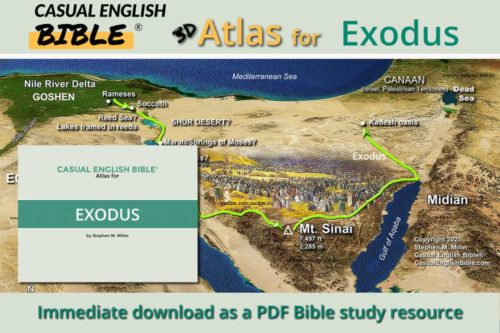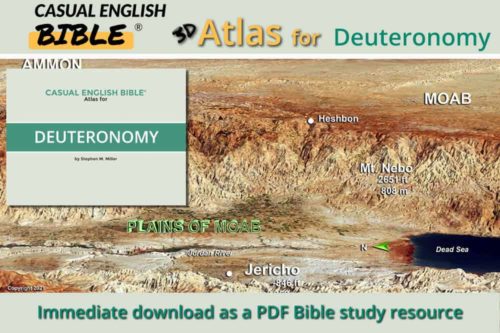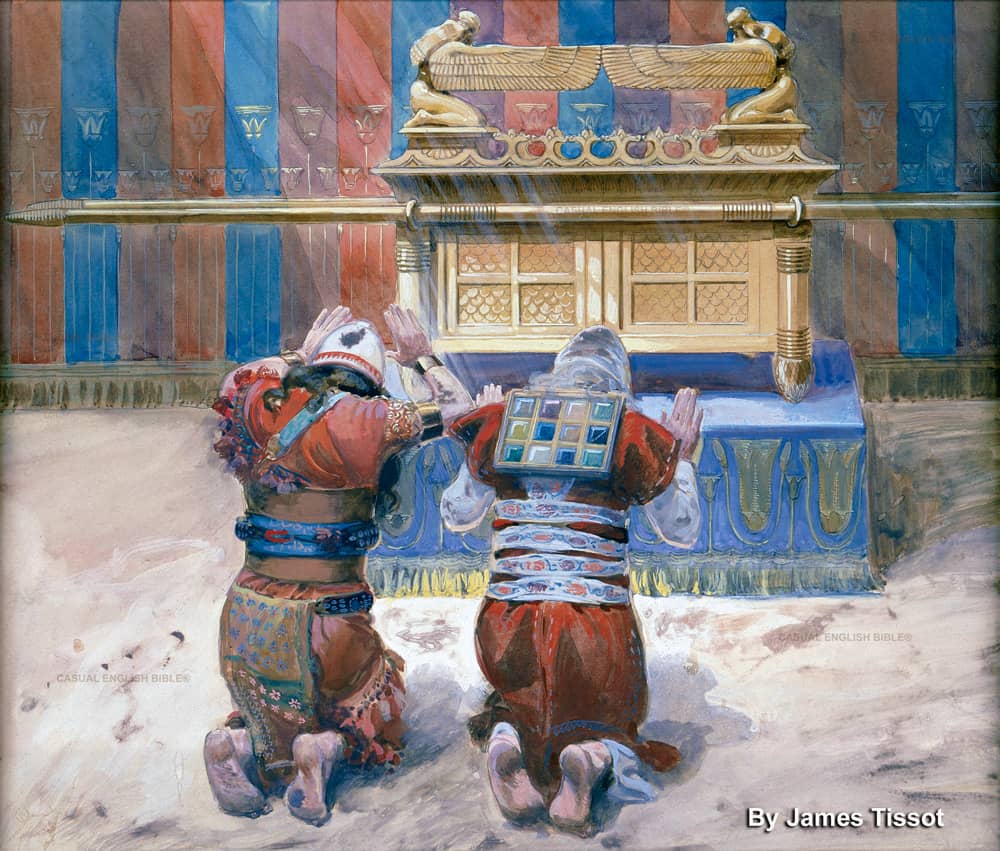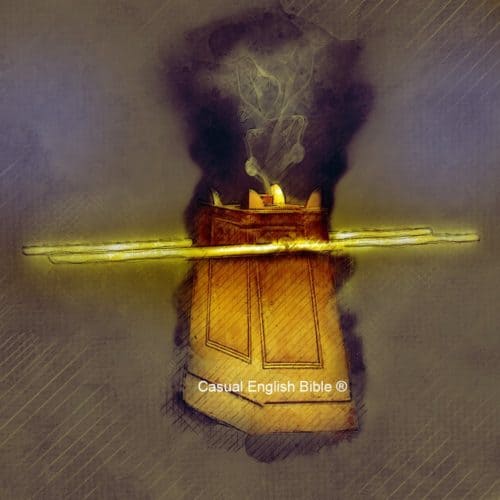Exodus 37
Worship center construction goes on
Building Israel’s holiest object
1Bezalel made the Box of the Ten Commandments [1] from acacia wood. He shaped it into a rectangle nearly four feet long and more than two feet wide and high. [2]2He covered it with gold plates, inside and out, and decorated it with gold molding all the way around. 3He made gold rings for all four bottom corners of the box, one ring on each corner. 4Then he made two poles from acacia wood, which he covered with gold. 5He put the poles into the rings on each side of the box. Priests would use these poles to carry the box when they broke camp and traveled.
6He made a gold lid for the box. This is where Israel would find forgiveness, atonement for their sins. [3] 7Bezalel hammered gold into the shapes of two images of celestial beings called cherubim. He put them at both ends of the lid. 8He had them face each other. And he attached them to the lid so they became part of it. 9They stood their wings spreading up and over the lid of the box, covering it beneath their wings. They faced one another, each looking toward the center of the lid.
Building the Table of God’s Presence
10He made a table [4] out of acacia wood. The table stood 36 inches long, 18 inches wide, and 27 inches high (92 cm x 46 cm x 69 cm). 11He covered the entire table with gold and added a decorative edge around the tabletop.12He made the gold rim around the table three inches (8 cm) wide. 13He created four gold rings and attached them to the four corners of the table, where the legs met the tabletop. 14He put the rings, made to hold two poles for carrying the table, near the decorative edging.
15Then Bezalel made the poles. He made them out of acacia wood, and covered them in gold. 16He made all the utensils for the table out of gold: plates, bowls, jars, along with the pitchers for pouring liquid offerings.
Creating the lampstand
17Next, Bezalel made the lampstand of pure, hammered gold. He gave it a base, a center stem, cups to hold lamps, and decorations of flower buds and petals. 18He designed the lampstand with six branches extending out from the center stem, three branches on each side, left and right.19Each one of the six branches on this lampstand had three cups that would hold oil lamps. He shaped these cups to look like almond blossoms, with buds and petals. 20He put four lamp cups on the center stem of the lamp. He made them look like almond blossoms, too, with buds and petals. 21He put an almond blossom under each pair of the six branches coming out of the stem. 22And he made the buds and branches from one piece of hammered gold.
23He made seven gold lamps for this lampstand. 24He made the entire lampstand and everything needed to operate it from about 75 pounds (35 kg) of pure gold.
Building the altar of incense
25Bezalel used acacia wood to build an altar for burning incense. He gave it a square top, 18 inches (46 cm) long and wide. The altar stood 36 inches (92 cm) high. He added horns [5] at the four corners of the top, built into the altar.26He covered the entire altar with pure gold, from top to bottom, including the horns. He added gold decorative molding around the altar. 27He made two golden rings for the altar. He put them under the molding on opposite sides of the altar. These were for carrying this altar. Poles slipped through the rings so people could lift the poles and carry the altar. 28He made the poles out of acacia wood and covered them with gold.
29Bazalel then made holy oil by mixing olive oil with pure, aromatic spices—using his skills as a perfumer.
Footnotes
Traditionally known as the Ark of the Covenant.
More preciously 45 x 27 x 27 inches and 115 x 69 x 69 cm.
The top of the Box of the Law (Ark of the Covenant) is where the high priest would splash blood on Israel’s annual day of repentance, the Day of Atonement, today known as Yom Kippur. This is where God met with Moses to give him instructions (Exodus 25:22). And it’s where God would appear in a cloud over the cover to forgive the nation of the sins the people committed each year (Leviticus 16:2). This cover is also known as the “mercy seat.”
The table is for displaying consecrated bread, known as the Bread of the Presence or Shewbread. Every Sabbath day, priests put 12 fresh loaves of bread on the table. A week later, priests ate those loaves and replaced them with another dozen loaves of bread (Leviticus 24:5-9).
Archaeologists have uncovered many “horned altars” in Israel and Palestinian Territories. Bible writers never explained why altars were built with the corners turned up like animal horns. On large altars, where animals were sacrificed, horns may have been a tribute to the livestock sacrificed there. One more common guess is that the horns gave priests something to which they could tie the dead animal. This could help keep the sacrificed animal from rolling off the fire before it was burned. Psalm 118:27 seems to add credibility to that theory: “Go ahead and tie the festival sacrifice to the four corners of the altar.” In this case, however, horns may simply have been a reflection of the main sacrificial altar.
Discussion Questions
- Sorry, there are currently no questions for this chapter.








